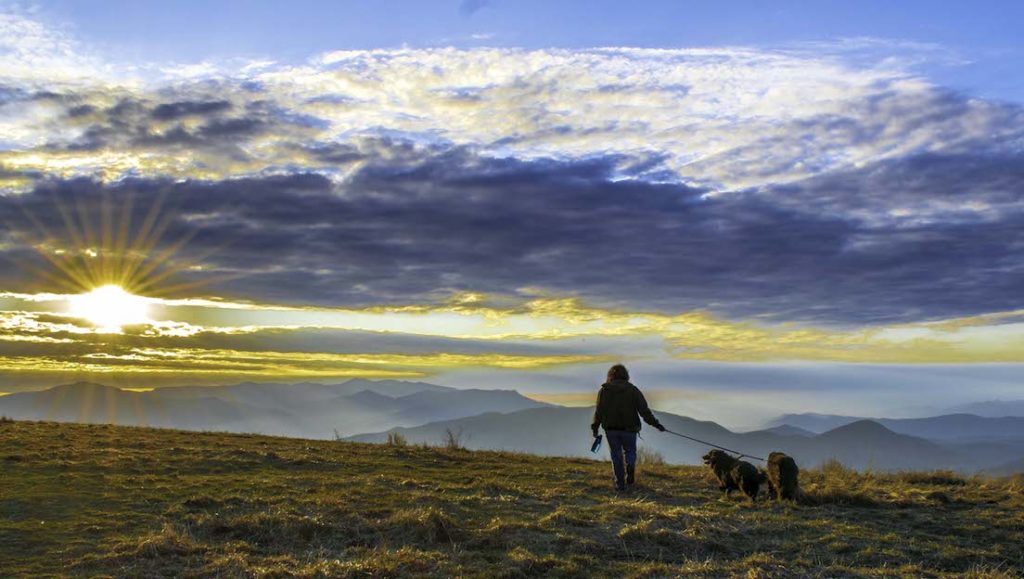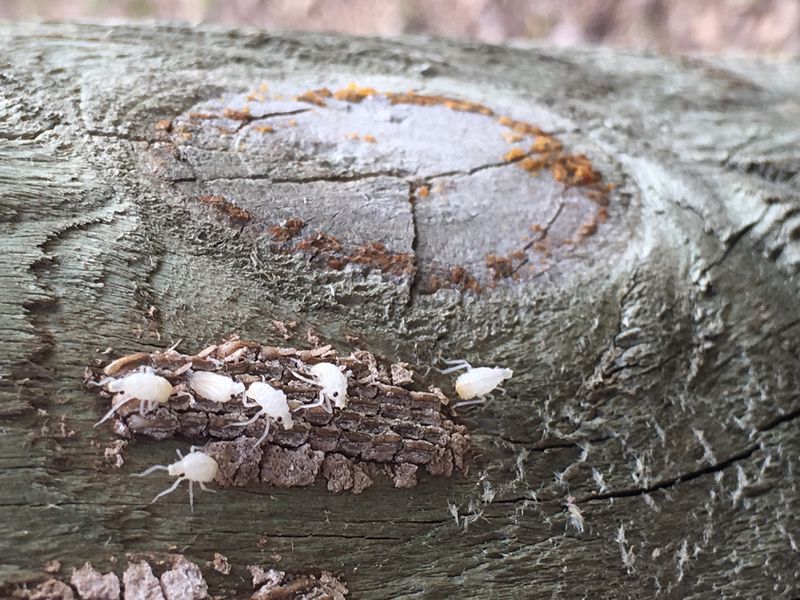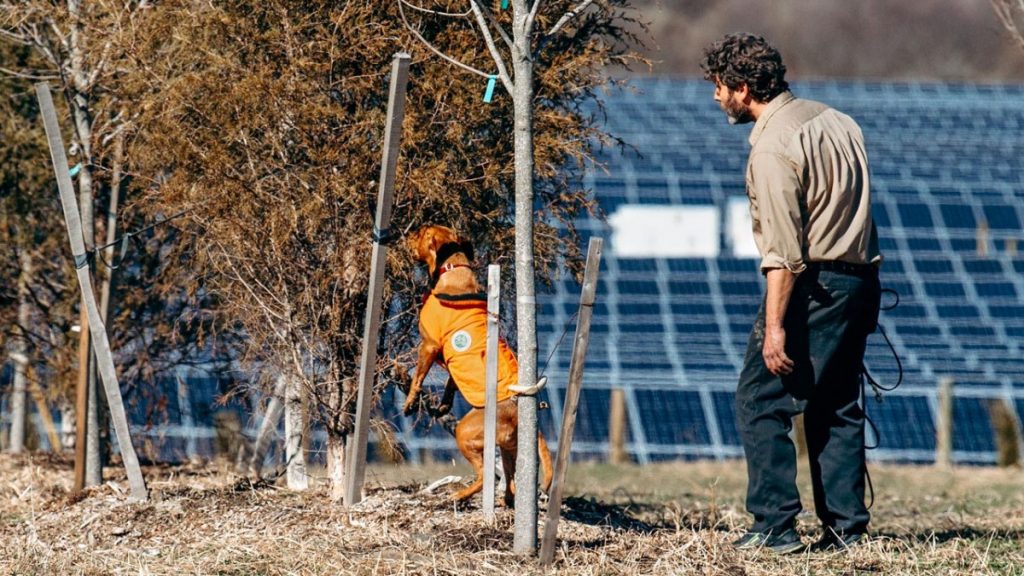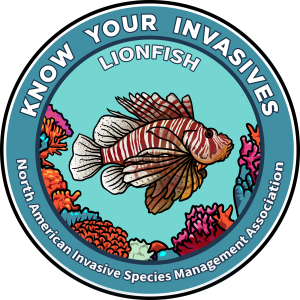Every month, new species are introduced to our lands and waters, new studies are published, and new methods of control are tested—with impacts varying across the map. It would be nearly impossible to stay on top of every piece of invasive species news.
However, the staff and board of the North American Invasive Species Management Association review headlines each month. This helps us stay on top of trends and further our mission to support, promote, and empower invasive species prevention and management in North America. We then share invasive species news most relevant for people who manage terrestrial and aquatic invasive species across the the United States, Canada and occasionally the world.
So, what happened this month?
- Invasive species success stories took center stage right when we needed some good news. We celebrate the invasive species managers and prevention specialists doing important work from aquatic invasive species inspections making major headway to promising predatory wasp releases to a so-far successful salt marsh restoration.
- Creativity abounds in invasive species detection, management and control work.
- And we’ve added a few thought-provoking articles in the Conversations section, which comes at the end of every monthly news post.
- These, plus much more! Read on:
Success Stories: Prevention, Eradication and Restoration
Weed-free, Profit-full
United States – Read on High Plains Journal
NAISMA’s Weed Free Forage & Gravel program “is crucial to stopping invasive species from moving to new states.” Weed-free certification is starting to become more desirable among buyers, and it is a trend that adds value to hay crops and restricts the movement of weeds that could devastate regions and choke out native species.

Rethinking our Footprint: Local Residents, Groups Strive to Balance Society and Environment
Minnesota – Read more on Southwest News Media
Development has built a bustling system of millions of people living their lives and doing hundreds of billions of dollars in business each year. It has also frayed the state’s living fabric, damaging its iconic lakes and woods and creating ecosystem problems that swing back around to harm us.
Keeping Tabs on Quonnie: Maintenance Work Continues on Salt Marsh
Connecticut – Read on The Westerly Sun
Ferguson, who completed a similar restoration at the Ninigret salt marsh before undertaking the Quonnie project, said that waiting a year to see how the marsh responded to the restoration had allowed her to refine and target her efforts.
AIS Inspections Show Progress
Minnesota – Read on Post Bulletin
“The trend is getting better. People are listening. People are taking action,’’ said Kelly Pennington, AIS prevention coordinator for the Minnesota DNR. “Most people are following AIS regulations, and that wasn’t always the case before.”

Insects are being deployed in the war against invasive species in Connecticut
Connecticut – Read on Connecticut Magazine
“We’re recovering the wasps all over the place, so they seem to be doing pretty well,” she says. “And 20 to 40 percent of the beetle larvae we find are killed. So we consider it a success.”
Further reading: Learn how National Invasive Species Awareness Week is raising awareness about how to educate local leaders about how invasive species managers—such as these entomologists in Connecticut—can protect North America’s most invaluable landscapes.
Prevention, Outreach and Education
Easier Transportation Worsens Weed Problem
Alberta – Read on The Western Producer
“We’ve never been able to move plants, animals, diseases around the world so quickly from every continent on earth, just in a matter of hours. And that’s why we have some of the challenges we have, but it is also the reason we have some of the amazing standards of living that we have now,” says Kelly Cooley. “It is definitely a mixed blessing.”

The COVID-19 Pandemic is Changing the Way People Recreate Outdoors
Global – Read more on Leave No Trace
In an effort to gather timely and relevant data on national recreation patterns, before, during, and after the pandemic, the Leave No Trace Center for Outdoor Ethics worked quickly with its research partner, Pennsylvania State University, to offer guidance to land managers, recreation providers, and outdoor enthusiasts across the country.
Invasive Species Website Goes Live
Montana – Read on the Billings Gazette
Visitors to the site can sign up to receive invasive species news and alerts and view identification guides for all invasive species known to exist in the state, including aquatic species, noxious weeds, pests and diseases, and emerging threats.

Spotted lanternfly season has begun; 2020 could see ‘significant populations’
Pennsylvania – Read on The Morning Call
This lanternfly season is expected to be a bad one. Leach said 2019 was a good weather year for lanternflies, and researchers saw a large number of eggs deposited in the fall compared to the 2018 season.
Citizen Science to Fight Purple Loosestrife
Wisconsin – Read on the Journal Times
The purple loosestrife biocontrol program utilizes the galerucella beetle in helping to take down this invasive species.
New Research
Local agencies partner to study invasive species threatening Arizona’s aspens
Arizona – Read in the Arizona Daily Sun
Oystershell scale is considered by many experts to be an emerging invasive species issue with the potential to severely damage or even destroy northern Arizona’s aspen over the coming years unless successful treatment techniques can be developed.
Charismatic Invasive Species Have an Easier Time Settling into New Habitats
Global – Read on EurekAlert
Scientific research programs and funding programs can also fall for this.
Don’t miss next month’s invasive species news. Sign up for the Early Detector, our free monthly newsletter for invasive species managers.
Detection, Management and Control
Biocontrol Proposed For Miconia In Hawaii
Hawai’i – Read on Big Island Video News
A Draft Environmental Assessment has been published, examining a butterfly that could help manage invasive miconia in Hawaiʻi forests, say ag officials.
Further reading: “Wisconsin dog trained to sniff out invasive species”
Watch for Poison Hemlock in Hayfields
Kentucky – Read on Sentinel Echo
Identification, treatment and timing for invasive plant that is potentially poisonous if ingested by livestock or humans.
Gypsy Moth Spraying Program Begins in Western Wisconsin
Wisconsin – Read on Wisconsin Examiner
“Aerial spraying is the most efficient and effective treatment method to help slow the spread and delay the impacts associated with gypsy moth outbreaks,” said Christopher Foelker, DATCP’s gypsy moth program manager. “It’s important to slow this invasive pest. Well-established gypsy moth populations cause damage to forests which impacts natural resources, wildlife, tourism and the timber industry.”
Dogs Trained to Detect Oak Wilt, Invasive Species
New York – Read and watch on Cornell News
A group at the NY NJ Trial Conference, which hosts the Lower Hudson Partnership for Regional Invasive Species Management (PRISM), a partner with Cornell Cooperative Extension (CCE), started training dogs in 2018 to recognize scotch broom, an invasive shrub, and spotted lantern flies, invasive pests that feed on grapes, apples and other plant species.
Policy and Rulemaking
Landscaping Plants Now Illegal to Sell in Indiana
Indiana – Read on Indy.org
“Under the Terrestrial Plant Rule, these plants are prohibited from being sold, gifted, exchanged or even transported within the state, punishable by a $500 fine per incident per day.”
Conversations
Invasive Plants and Pandemics- April 2020: Reflections from an Invasive Plant Ecologist
Global – Read on Montana State University Invasive Plants
The coronavirus pandemic has given us all much to think about. As I navigate professional and personal responsibilities, I have been considering how my experience as an applied invasive plant ecologist can inform and guide my actions as a responsible citizen and vice versa.
The Extinction Crisis Devastating San Francisco Bay
California – Read on The Nation
Invasive predators “will take more than their fair share, and the [irrigation] pumps will take the rest,”a state employee in charge of the Mokelumne River Hatchery said.
America’s Tumultuous Love Affair with Kudzu
United States – Read on Atlas Obscura
Before the plant was considered a scourge, it was used for decoration, as livestock fodder, and to fight erosion.
Extension Needs Outreach Innovation Free from the Harms of Social Media
Despite the outreach-building benefits of social media for Extension, it is time for Extension professionals to find new innovative ways to reach out that do not involve social media.
Want more Invasive Species News? Support our work by joining NAISMA.




